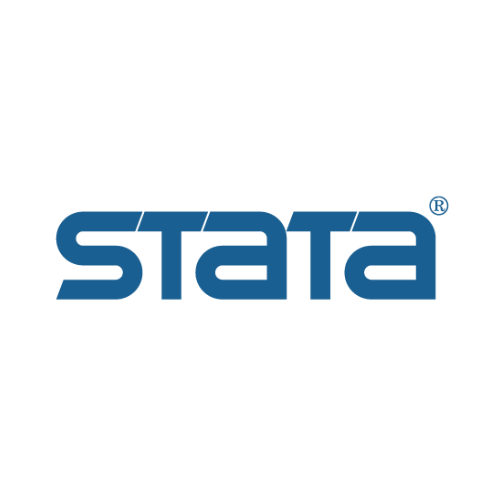craft of statistical analysis free webinars
How to Benefit from Stata’s Bountiful Help Resources

Stata has perhaps the best support resources of any statistical software to help you prepare and analyze your data. These resources are helpful for all skill levels, from beginners to advanced users. For just about any Stata command, there are FAQs, text books, Stata Journal articles, and third party add-ons – not to mention the built in help page. learn more
Five Tips and Tricks: How to Make Stata Easier to Use

Stata allows you to describe, graph, manipulate and analyze your data in countless ways. But oftentimes it can be very frustrating trying to create even the simplest results. If you’re a beginner, the drop down commands can be extremely daunting. learn more
articles at the analysis factor
The Wonderful World of User Written Commands in Stata

Fortunately there are some really, really smart people who use Stata. Yes I know, there are really, really smart people that use SAS and SPSS as well. But unlike SAS and SPSS users, Stata users benefit from the contributions made by really, really smart people. How so? Is Stata an “open source” software package? learn more
Missing Data Diagnosis in Stata: Investigating Missing Data in Regression Models

In a recent post, we examined how to use the same sample when running a set of regression models with different predictors. Adding a predictor with missing data causes cases that had been included in previous models to be dropped from the new model. learn more
Using the Same Sample for Different Models in Stata

Previously, I presented a table which examined the impact several predictors have on one’ mental health. The sample sizes are quite large. Does it really matter that they are different? The answer is absolutely yes. Fortunately in Stata it is not a difficult process to use the same sample for all four models shown above. learn more
Using the Collapse Command in Stata

Have you ever worked with a data set that had so many observations and/or variables that you couldn’t see the forest for the trees? You would like to extract some simple information but you can’t quite figure out how to do it. Get to know Stata’s collapse command – it’s your new friend. learn more
Hierarchical Regression in Stata: An Easy Method to Compare Model Results

An “estimation command” in Stata is a generic term used for a command that runs a statistical model. Examples are regress, ANOVA, Poisson, logit, and mixed. Stata has more than 100 estimation commands. There are a number of different model building approaches, but regardless of the strategy you take, you’re going to need to compare them. learn more
Stata Loops and Macros for Large Data Sets: Quickly Finding Needles in the Hay Stack

I recently opened a very large data set titled “1998 California Work and Health Survey” compiled by the Institute for Health Policy Studies at the University of California, San Francisco. There are 1,771 observations and 345 variables. Can you imagine agreeing to take a survey and then be asked 345 questions? Dude! learn more
Using Stored Calculations in Stata to Center Predictors: An Example

One of Stata’s incredibly useful abilities is to temporarily store calculations from commands. Why is this so useful? Let’s start with an illustrative example: centering predictors. Let’s say I’m trying to explain how important a college education is to my kids. learn more
Loops in Stata: Making Coding Easy

We’ve already discussed using macros in Stata to simplify and shorten code. Another great tool in your coding tool belt is loops. Loops allow you to run the same command for several variables at one time without having to write separate code for each variable. learn more
Macros in Stata: Why and How to Use Them

We finished the last article about Stata with some confusing coding. I admit it looks like a foreign language. Let me explain how simple it is to understand. Stata allows you to use a single word, such as “continuous”, to represent many other words. In Stata this process is known as a macro. learn more
Why Use Stata?

Like many people with graduate degrees, I have used a number of statistical software packages over the years. Some were more difficult to use than others but if you used them often enough you would become proficient to take on the task at hand (though some packages required greater usage of George Carlin’s 7 dirty words). learn more
Using Stata Efficiently to Understand Your Data

Most statistical software packages use a spreadsheet format for viewing the data. This helps you get a feeling for what you will be working with, especially if the data set is small. But what if your data set contains numerous variables and hundreds or thousands of observations? There is no way you can get warm and fuzzy by browsing through a large data set. learn more
Opposite Results in Ordinal Logistic Regression—Solving a Statistical Mystery

A number of years ago when I was still working in the consulting office at Cornell, someone came in asking for help interpreting their ordinal logistic regression results. The client was surprised because all the coefficients were backwards from what they expected, and they wanted to make sure they were interpreting them correctly. learn more
Argggh! How Do I Output Tables and Graphs From Stata?

For my first assignment using Stata, I spent four or five hours trying to present my output in a “professional” form. The most creative method I heard about in class the next day was to copy the contents into Excel, create page breaks, and then copy into Word. SPSS makes it so easy to copy tables and graphs into another document. Why can’t Stata be easy? learn more

